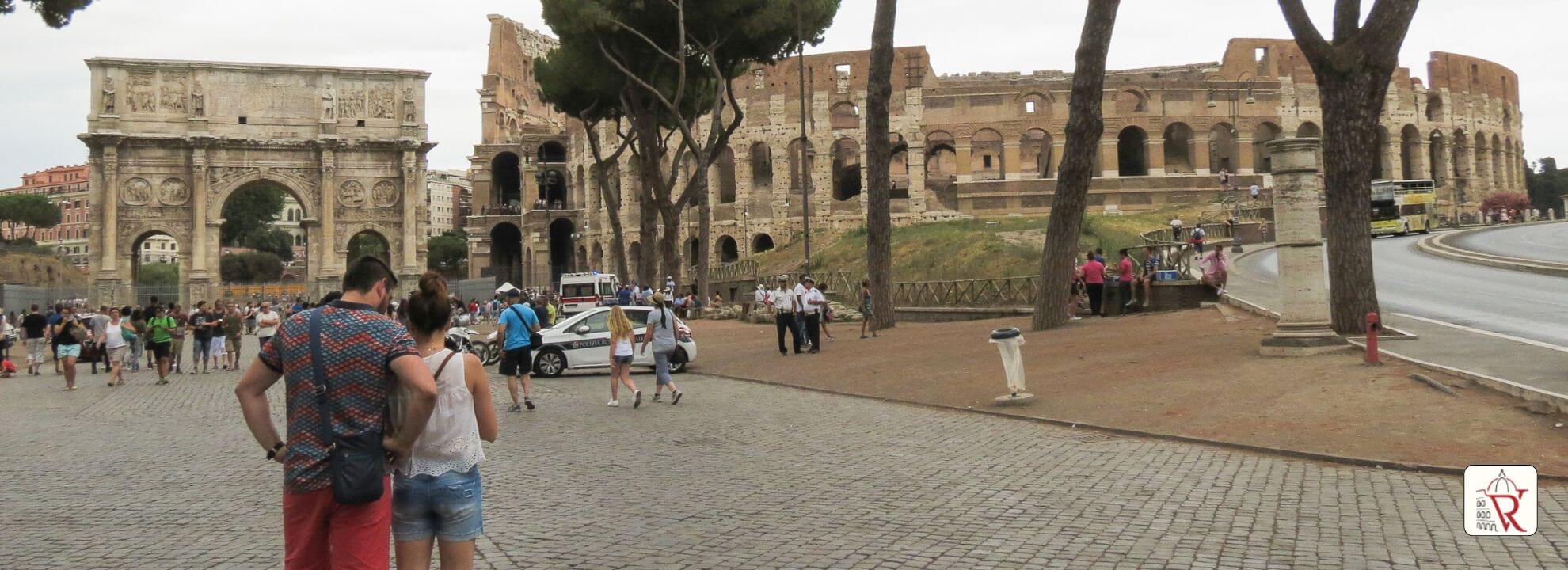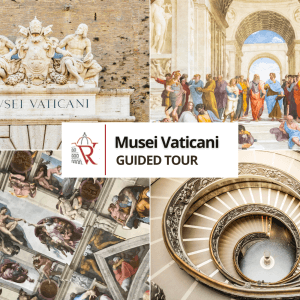What do you need to Book in Advance in Rome: 7 Must-Book Attractions + 4 Recommended Reservations
- 10 min read
Find out exactly what do you need to book in advance in Rome — from the Colosseum to the Vatican Museums. Includes booking timelines, best visiting hours, dress codes, and security tips for every attraction.


Rome: Official Guided Tour of the Vatican Museums and Sistine Chapel
Attractions in Rome requiring tickets
These Rome attractions require advance booking — no exceptions. Tickets are limited, and entry without reservation is often impossible.
During high season (April to October), lines can stretch for hours beneath the sun. Booking ahead not only secures entry but allows visitors to organize days efficiently — maximizing experience and minimizing stress.
1. The Colosseum required tickets
Walking toward the Colosseum, one can already sense the centuries of history that echo through its arches. The air hums with anticipation as travelers line up, cameras in hand, waiting for their timed entry. From above, sunlight pours through the open arena, illuminating the stone where gladiators once stood. For those who book in advance in Rome, entry becomes seamless — a few steps and the past unfolds.
Practical Info:
- When to book: 1 month in advance (the calendar open 1 month before your visit)
- Where to book: with Omnia Card 72h, you can book here.
- When to visit: Early morning (8:30 – 10:00 AM) or late afternoon.
- Arrive before slot: 30–40 minutes early.
- Security wait time: 20–45 minutes.
- What to bring: Water, hat, passport/ID.
- What to wear: Light clothes and closed shoes.
2. Vatican Museums and Sistine Chapel
Approaching the Vatican Walls, one quickly notices the crowd that wraps around the block. The early sunlight reflects off marble domes, while visitors clutch their phones, confirming reservations. Inside, each corridor feels like a journey through time — Raphael’s rooms, Egyptian mummies, and finally the Sistine Chapel ceiling. Only those who book in advance in Rome can walk past the long queue and enter within minutes.
Practical Info:
- When to book: 1 month in advance (the calendar open 1 month before your visit)
- Where to book: ticket.romevaticancard.com.
- When to visit: After 2 PM (fewer tours).
- Arrive before slot: 45 minutes early.
- Security wait time: 25 – 40 minutes.
- What to bring: Ticket (digital or printed), ID.
- What to wear: Shoulders and knees covered.
3. Vatican Excavations (Scavi Tour beneath St. Peter’s Basilica)
Few visitors realize that beneath St. Peter’s Basilica lies an ancient necropolis. The Scavi Tour winds through narrow corridors lined with tombs, ending at the burial site believed to hold St. Peter’s remains. Only 250 visitors per day may enter, making this one of the hardest tickets to get in Rome — another reason to book in advance in Rome.
Practical Info:
- When to book: 1 months ahead.
- Where to book: Vatican Excavations Office via official email.
- When to visit: Early morning for cooler air.
- Arrive before slot: 30 minutes early.
- Security wait time: 15–25 minutes.
- What to bring: Passport for ID check.
- What to wear: Modest clothes, no sleeveless tops.
4. Borghese Gallery (Galleria Borghese)
Hidden inside the green heart of Villa Borghese park lies a collection that astonishes even seasoned art lovers. Visitors cross shaded lawns, the scent of pine in the air, before entering this small yet spectacular gallery. Inside, Bernini’s sculptures glow under soft light. Every piece feels close — personal — which is why the museum admits only a few hundred guests per session. To ensure a spot, it’s essential to book in advance in Rome.
Practical Info:
- When to book: 3–4 weeks before.
- Where to book: Official Borghese site.
- When to visit: Afternoon sessions for smaller crowds.
- Arrive before slot: 20 minutes early.
- Security wait time: 15–25 minutes.
- What to bring: Booking confirmation, ID.
- What to wear: Comfortable attire, no large bags.
5. Mausoleum of Augustus
In the heart of modern Rome lies the resting place of its first emperor. The circular monument, recently reopened, feels quiet and solemn compared to nearby traffic. Entry is regulated by timed tickets, ensuring a peaceful visit. Booking early allows travelers to experience one of Rome’s reborn wonders.
Practical Info:
- When to book: 2–3 weeks in advance.
- When to visit: Weekdays, early morning.
- Arrive before slot: 15 minutes early.
- Security wait time: 10–15 minutes.
- What to bring: Ticket QR code.
- What to wear: Casual, comfortable clothing.
6. Domus Aurea (Nero’s Golden House)
Beneath a grassy hill near the Colosseum lies Emperor Nero’s once-golden palace. Visitors descend through dimly lit tunnels, guided by the glow of helmets and projectors that reveal mosaics untouched for centuries. This rare archaeological site opens only on weekends, and tours sell out quickly. To walk through Nero’s secret corridors, one must book in advance in Rome.
Practical Info:
- When to book: 4 weeks ahead.
- When to visit: 9–11 AM (cooler temperatures).
- Arrive before slot: 20–25 minutes early.
- Security wait time: 10 minutes.
- What to bring: Closed shoes.
- What to wear: Comfortable layers (cool underground).
7. Domus Romane of Palazzo Valentini
Hidden under an ordinary building near Piazza Venezia, holograms and glass floors reveal ancient Roman homes beneath the modern city. The guided tour feels intimate, with small groups moving quietly through dark corridors. The experience is part history, part time travel — another site where it pays to book in advance in Rome.
Practical Info:
- When to book: 3–4 weeks in advance.
- Where to book: Palazzo Valentini official site.
- When to visit: Morning slots on weekdays.
- Arrive before slot: 15–20 minutes early.
- Security wait time: 10 minutes.
- What to bring: Confirmation email.
- What to wear: Flat shoes.

Rome: Official Guided Tour of the Vatican Museums and Sistine Chapel
Recommended Reservations in Rome
Though not strictly mandatory, pre-booking these sites ensures a smoother experience and less waiting.
1. St. Peter’s Dome (Cupola di San Pietro)
Climbing toward the top of St. Peter’s Dome, Rome slowly unfolds below — domes, rooftops, and the Tiber winding through the city. Those who arrive early enjoy soft morning light and fewer crowds. Elevator tickets sell fast, so it’s best to book in advance in Rome to avoid waiting under the Vatican sun. Discover how to visit St Peter’s Dome: Climb, Tickets, Tips and Panoramic Views.
Practical Info:
- When to book: 1–2 weeks before.
- When to visit: Before 9 AM.
- Arrive before slot: 25 minutes early.
- Security wait time: 30 minutes.
- What to bring: Camera, light jacket.
- What to wear: Respectful attire.
2. Castel Sant’Angelo
Perched on the Tiber’s edge, this fortress tells stories of emperors and popes. From the terrace, one can see the curve of St. Peter’s Dome and the golden light of Rome at sunset. Booking early means skipping the afternoon lines and enjoying one of the best panoramic views in the city.
Practical Info:
- When to book: 1–2 weeks before.
- When to visit: 4–6 PM (sunset hours).
- Arrive before slot: 15 minutes early.
- Security wait time: 15–25 minutes.
- What to bring: Camera, water.
- What to wear: Comfortable shoes for stairs.
3. The Pantheon
As sunlight moves across the marble floor through the open oculus, the Pantheon feels timeless. The mix of whispers and echoes under its vast dome is unforgettable. Now requiring a ticket, it’s best to reserve early to avoid waiting in the midday heat.
Practical Info:
- When to book: 3–5 days before.
- When to visit: 8:30 AM or after 5:30 PM.
- Arrive before slot: 15–20 minutes early.
- Security wait time: 10–20 minutes.
- What to bring: Small bag, ID.
- What to wear: Modest clothing.
4. The Catacombs of Rome (San Sebastiano, San Callisto, etc.)
Beyond the city walls, tunnels carved into tufa rock reveal the earliest Christian history. Lanterns flicker as guides explain ancient symbols and rituals. Each group is small, each path silent — a moving experience for anyone seeking the roots of faith and resilience.
Practical Info:
- When to book: 2–3 weeks in advance.
- Where to book: Official Catacombs sites or trusted operators.
- When to visit: 9–11 AM.
- Arrive before slot: 15 minutes early.
- Security wait time: 5 minutes.
- What to bring: ID, water, flashlight optional.
- What to wear: Closed shoes and light jacket.

Rome: Official Guided Tour of the Vatican Museums and Sistine Chapel
Why It’s Essential to Book in Advance in Rome
Rome rewards the traveler who plans ahead. Although it’s tempting to wander freely, reality is that many of its landmarks operate on strict time slots or daily visitor limits. As a result, anyone hoping to step inside the Colosseum or gaze up at Michelangelo’s ceiling must book in advance in Rome.
Doing so saves hours in line, guarantees entry, and ensures a smoother experience through the city’s timeless wonders. This guide reveals exactly when to book, where to reserve, and how to make the most of every moment in Rome.

Rome: Official Guided Tour of the Vatican Museums and Sistine Chapel
FAQs About What to Book in Advance in Rome
What requires reservations in Rome?
Several major sites require reservations: the Colosseum, Vatican Museums, Borghese Gallery, Domus Aurea, Domus Romane of Palazzo Valentini, Vatican Excavations, and the Mausoleum of Augustus. These attractions have timed entries and strict visitor limits, so booking online 4–8 weeks ahead is recommended.
Does St. Peter’s Basilica require tickets?
Entry to St. Peter’s Basilica is free, but climbing the Dome (Cupola di San Pietro) requires a separate ticket. Lines for the elevator and stairs can be long, especially on weekends, so it’s best to pre-book skip-the-line access and arrive early in the morning.
What tours should you book in Rome?
Book guided tours for the Colosseum (especially underground and arena floor access), and the Vatican Museums. Small-group or skip-the-line tours save time and often include exclusive areas not open to general visitors.
What attractions need tickets in Rome?
The Colosseum, Pantheon, Vatican Museums, Borghese Gallery, Castel Sant’Angelo, and Domus Aurea all require tickets. Most can be purchased from official portals and resellers such as ticket.romevaticancard.com.
What should you prebook when visiting Italy?
In addition to Rome’s landmarks, prebook top attractions in other cities: the Uffizi Gallery in Florence, the Last Supper in Milan, the Vatican Museums in Rome and the Doge’s Palace in Venice. Italy’s main tourist sites share one rule — plan early to guarantee entry and skip long queues. Trusted options for prebook are official resellers sush as venicevisitpass.com and ticket.romevaticancard.com.
Is the Pantheon free to visit?
No. Since 2023, the Pantheon requires an entrance ticket. It’s inexpensive but very popular, so it’s smart to book in advance in Rome online, particularly for weekends and late afternoons.
Where is the best place to book tickets for Rome attractions?
The safest and easiest option is ticket.romevaticancard.com, which offers official passes and combo tickets for top sites.
Is it worth hiring a tour guide in Rome?
Yes. A professional guide brings history to life, provides context often missed by audio guides, and helps skip the longest lines. Guided tours are particularly valuable at the Colosseum, the Vatican, and the Roman Forum.
How to book Rome attractions?
The best method is online booking through official websites or verified partners. Always choose digital tickets to avoid printing delays and arrive at least 20–30 minutes before your time slot for security screening.
Which company offers the best tours in Italy?
Trusted platforms include Venice Visit Pass for multi-city access and Rome Vatican Card for comprehensive Rome packages covering museums, guided tours, and skip-the-line entry.

Rome: Official Guided Tour of the Vatican Museums and Sistine Chapel
You may also like
- Where to Buy Tickets for Rome Attractions: tips, best websites, passes, and tours for tourists
- 10 Must Do Tours in Rome: Vatican Museums, Appian Way, E-bike and Sunrise tours
- Visiting the Vatican Museums: is a Vatican Card worth it?
- How many days to tour Rome: best time to visit, mistakes to avoid, travel tips and expert advice
